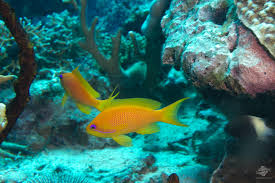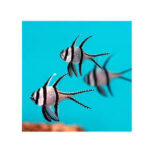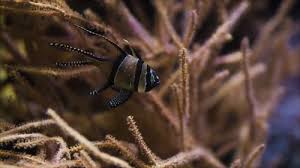
In Chinese mythology and culture, the dragon (龙, long) is an immensely powerful and revered creature, often associated with water, power, and transformation. Throughout the millennia, it has symbolized imperial authority, celestial influence, and the forces of nature. One of the most profound connections that the dragon has in Chinese culture is with the Yellow River, or Huang He (黄河), one of China’s longest and most historically significant rivers. This sacred waterway has been a life source for Chinese civilization, and the dragon has become intricately linked to its identity and the people who have lived along its banks. In this article, we explore the rich and layered connection between the dragon and the Yellow River, looking at its mythological significance, cultural roles, and how the imagery of the dragon and the river continue to shape Chinese identity and traditions.
The Yellow River: A Source of Life and Mysticism
The Huang He River, often called the “Mother River” of China, flows through nine provinces, cutting across the northern part of the country. It has been a cradle of Chinese civilization for over 5,000 years, nourishing the people with fertile soil, providing water for irrigation, and enabling trade and communication. The river is revered not only for its life-sustaining properties but also for its spiritual and mythical importance. In ancient times, the river was both a literal and symbolic source of vitality for the people who lived in its basin.
But despite its importance, the Huang He River is notorious for its unpredictable and destructive nature. Frequent flooding has caused catastrophic damage throughout Chinese history, and the river has been referred to as “China’s sorrow” because of the loss of life and devastation it has caused. Yet, its connection to Chinese culture and mythology remains steadfast, and the dragon plays a significant role in shaping its mythological narrative.
The Dragon as a Symbol of Water and Control
In Chinese mythology, the dragon is considered a creature of immense power and a symbol of control over water. This is no coincidence, as the dragon is often depicted as a water deity that governs rivers, lakes, seas, and all bodies of water. The ancient Chinese saw the dragon as a force capable of both nurturing and destroying, much like the Huang He itself. As a bringer of rain, the dragon could bring prosperity and life, but it could also unleash storms and floods, which, like the river, could wreak havoc on communities.
The mythological connection between the dragon and the Huang He River is steeped in these dual aspects of power and danger. In Chinese cosmology, dragons are often associated with the element of water, which is one of the five elements (wood, fire, earth, metal, and water) that governs the universe. Water is considered an essential force in the cycle of life, and the dragon, as a representation of water, is seen as a controlling figure over this element.
The Myth of the Yellow River Dragon
One of the most enduring myths about the Yellow River and the dragon is that of the Yellow River Dragon King. This legendary figure is a prominent figure in Chinese folklore, said to rule over the waters of the Huang He. As with many Chinese dragon myths, the Dragon King is a protector of the river and its inhabitants, ensuring the river flows with life-giving water. However, he is also seen as a figure who can cause flooding and destruction if not appeased.
In various versions of the myth, the Yellow River Dragon King is portrayed as a majestic, powerful creature with the ability to summon rains and floods. In times of drought or when the river’s flow slowed, the people would call upon the Dragon King to provide much-needed water. Conversely, when the river flooded, causing devastation and loss, the dragon was blamed for his wrath. The balance between the river’s life-giving and destructive forces is reflected in this myth, mirroring the complex relationship between the people of China and the Huang He River itself.
The myth of the Yellow River Dragon King is also connected to the broader theme of water control in ancient China. In ancient times, Chinese emperors would perform elaborate rituals to appease the river gods and dragons, hoping to maintain harmony between the forces of nature and the human world. The Yellow River Dragon King, in this sense, was seen as an essential figure in ensuring the river’s proper flow, allowing for the continued prosperity and well-being of the people.
The Dragon’s Role in Chinese Flood Control and Agriculture
The historical importance of the Huang He River is evident in its critical role in Chinese agriculture. The river’s unpredictable floods brought both abundance and destruction to the land, and throughout history, the Chinese people have had to adapt to this challenging environment. Ancient Chinese emperors and officials sought to control the river, taming it through the construction of dikes, canals, and irrigation systems.
The dragon’s symbolic role in controlling the water also extended to the management of the river’s flow. As a powerful and spiritual force, the dragon was believed to have the ability to prevent floods and ensure fertile soil for crops. This connection between the dragon and agricultural prosperity is deeply embedded in Chinese culture. In many myths, dragons are shown as protectors of the land, ensuring that rivers and lakes remain abundant and fertile. The belief that the dragon had the power to control the river’s flow is indicative of the centrality of water management to the survival and prosperity of ancient Chinese civilization.
One of the most important practices associated with the dragon and the Huang He was the ritual of praying for favorable weather and good harvests. In ancient China, the emperor, often considered the Son of Heaven, would perform ceremonies dedicated to the river and its dragon deity to ensure the safety of the people and the continued flow of the river. These ceremonies often took place near the river’s source, in the presence of large dragon statues, and involved offerings and prayers for the continued well-being of the nation.
The Dragon and the Huang He in Art and Literature
The connection between the dragon and the Huang He is also expressed in Chinese art and literature. The dragon, as a symbol of water, is frequently depicted in traditional Chinese paintings, where it is shown swirling in the clouds, rising from the waters, or coiling around mountains. These depictions often convey the power and majesty of the dragon as a deity that controls the forces of nature.
In literature, the Yellow River Dragon King appears in a wide range of classical texts, including myths, poems, and historical records. One of the most famous literary works that explores the myth of the Yellow River Dragon King is the Classic of Mountains and Seas (Shan Hai Jing), an ancient Chinese text that describes various mythological creatures and deities. The dragon is frequently invoked in poetry as a symbol of natural forces, celestial power, and imperial authority. In these poems, the dragon’s connection to the Huang He symbolizes the unity between the natural world and the emperor’s reign, as both are believed to be inextricably linked to the flow of the river and its influence on society.
Modern-Day Reverence of the Yellow River Dragon
In modern times, the mythology surrounding the dragon and the Huang He River continues to be honored in Chinese culture. The river is still a symbol of life, fertility, and cultural heritage, while the dragon remains a symbol of China’s ancient history, power, and prosperity.
Cultural festivals and ceremonies related to the river and its dragon continue to be held in various parts of China. The annual Dragon Boat Festival, for example, celebrates the river and its connection to water and protection. The festival, which involves dragon-shaped boats racing on rivers, commemorates the ancient customs of honoring the dragon deity.
The Yellow River Dragon has also found a place in contemporary Chinese art and popular culture. From traditional paintings to modern film and animation, the dragon continues to be depicted as an embodiment of China’s natural and spiritual legacy. The river and the dragon are intertwined as symbols of resilience, power, and unity, representing the enduring connection between humanity and the forces of nature.
Conclusion
The dragon’s profound connection to the Huang He River highlights the deep relationship between humanity and nature in Chinese culture. As both a symbol of protection and destruction, the dragon reflects the dynamic forces of water, which nourish and challenge the land and its people. The enduring mythology of the Yellow River Dragon, along with the dragon’s role in agricultural practices, art, and literature, has solidified the dragon’s place as one of the most significant and revered symbols in Chinese culture. Today, this ancient connection continues to be celebrated in cultural rituals and in the hearts and minds of the Chinese people, who continue to honor both the river and the dragon as symbols of life, transformation, and prosperity.









